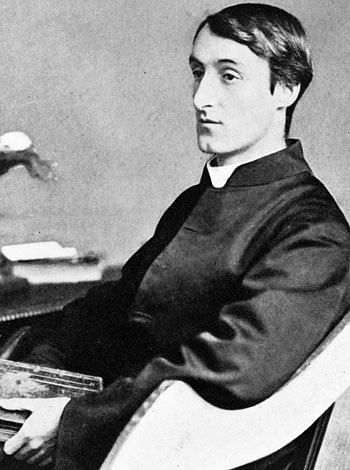How does inscape relate to landscape? For Gerard Manley Hopkins, inscape was that which gives something its own special identity. We come to feel and perceive these qualities through what he called instress. J.R. Watson: ‘the inscape of an elm tree is the property by which we recognize it: but it is not just its shape or ‘scape’: it is its ‘inscape’, its inner being or self-hood, the thing itself in its own special nature.’
However, inscape is not necessarily about the qualities of a particular tree. For example, on May 18 1870, Hopkins noted in his diary “great brilliancy and projection: the eye seemed to fall perpendicular from level to level along our trees, the nearer and further Park; all things hitting the sense with double but direct instress.” Here the instress is a force from within the trees which gives this landscape its particular intensity.
W. H. Gardner describes instress as ‘the sensation of inscape – a quasi-mystical illumination, a sudden perception of the deeper pattern, order and unity which gives meaning to external forms.’ Hopkins experienced instress as he walked in the landscape, studying bluebells and horned violets, looking at the moon and the sky or the waves of the sea, even, as here, in encountering an old stone pointed arch:
'The day was bright, the sun sparkling through a frostfog which made the distance dim and the stack of Denbigh hill, as we came near, dead mealy grey against the light: the castle ruins, which crown the hill, were punched out in arches and half arches by bright breaks and eyelets of daylight. We went up to the castle but not in: standing before the gateway I had an instress which only the true old work gives from the strong and noble inscape of the pointed arch...'
- from Gerard Manley Hopkins’ diary, February 4th 1875





